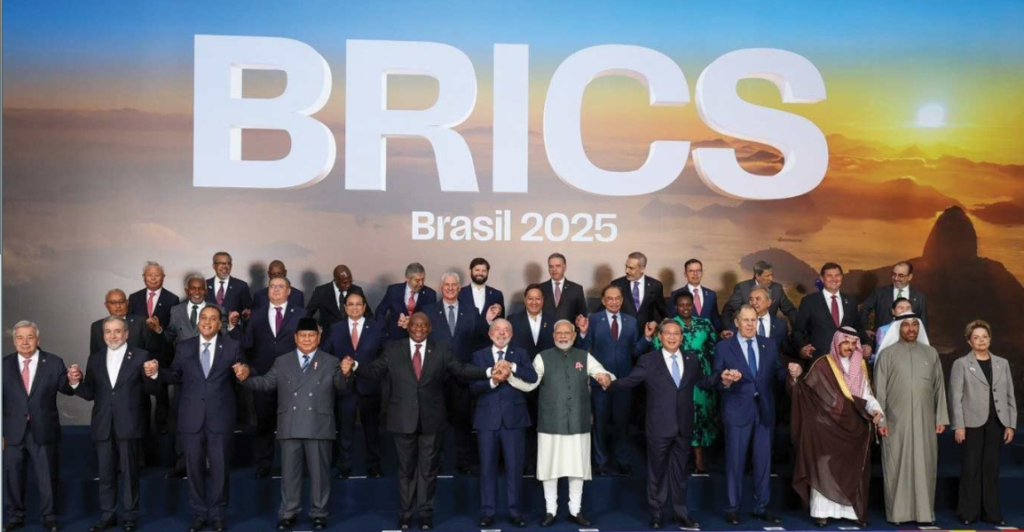Syllabus
GS 3: Environment Pollution
Context:
Recently, the BRICS countries have strongly opposed and rejected the European Union’s Carbon Border Adjustment Mechanism (CBAM).
More on the News
- They rejected by stating that CBAM undermine their transition to a cleaner economy.
- The stated aim of the EU’s CBAM is to prevent “carbon leakage” where companies move production to countries with weaker climate rules.
- However, in reality, it makes products like steel and cement from countries like India more expensive and less competitive in European markets.
- Developing countries like India and China have strongly criticized the CBAM by calling it a one-sided and unfair trade barrier.
- They argue that it breaks global trade and climate agreements and have raised their concerns at several international platforms including annual climate summits.
- However, the EU has continued to stand by its decision and has not backed down.
About CBAM
- CBAM is a type of import tax that the EU places on goods made in other countries using production methods that release more carbon emissions than what European manufacturers are permitted to emit.
- If a product from another country is made using a process that produces more emissions than what is allowed under EU standards, it will face a tax when entering the European market.
- According to the European Commission, CBAM is designed to follow WTO rules and other international commitments.
- Under this system, EU importers will need to buy carbon certificates equal to the carbon price that would apply if the goods were made under EU carbon rules.
- However, if the producer from a non-EU country can prove they’ve already paid a carbon price in their own country, then that amount will be deducted from what the EU importer has to pay.
- CBAM is currently in a “transitional phase” (2023–2025) and the full system will come into effect from 2026.
Issues with CBAM
- Impact on Developing Countries: CBAM makes products from countries like India and China more costly in Europe. This reduces their ability to compete in European markets.
- Seen as Unfair Trade Barrier: Developing countries say CBAM is one-sided and unfair. They believe it breaks global trade and climate agreements.
- Violation of Paris Agreement: The 2015 Paris Agreement protects developing countries from the bad effects of climate actions. CBAM goes against this promise.
- Global Opposition at Climate Summits: At COP28 in Dubai (2023), it was agreed that climate actions should not act as unfair trade barriers. CBAM seems to ignore this agreement.
- Ignores Climate Equity: CBAM does not respect the idea that poorer countries should be treated differently in climate action. This principle is a key part of international climate rules.
- Favors Rich Countries’ Industries: Companies in rich countries with strong emission rules benefit from CBAM. Their goods are not taxed, so they are cheaper in Europe.
- Disadvantages for Poorer Nations: CBAM makes goods from developing countries more expensive. It gives an unfair advantage to industries in developed countries.
Other Measures to mitigate Climate Change
- CBAM and Its Global Influence: It is expected to be the most impactful climate-linked trade policy so far because the EU accounts for about 15% of global imports.
- Other Countries Considering Similar Measures: United Kingdom and Canada are reported to be planning their own versions of CBAM. This shows a growing global interest in using trade tools to address climate change.
- Climate-Linked Non-Tariff Barriers: Some regions, including the EU, ban imports made from illegally harvested forests. These are examples of non-tariff measures aimed at protecting the environment.
- Climate Change Driving Protectionism: Climate change is now speeding up a trend of trade protectionism — countries using climate and other reasons to protect their economies.
- These actions are not only about the environment but also about economic, strategic and security concerns.
U.S. Tariffs
- The Inflation Reduction Act (IRA) passed in the U.S. in 2022 offers big subsidies to clean energy and electric vehicle industries. Though not a direct tax, such policies impact global trade by giving local industries an advantage.
- U.S. Tariffs under Trump: The tariffs introduced by Donald Trump were based on fears about energy security. These were linked to China’s dominance in renewable energy supply chains, not directly to climate goals.
China’s Role in the Green Economy
- China controls a large share of the resources and technology needed for solar, wind, batteries and critical minerals.
- Its influence in the clean energy sector is even bigger than what oil-producing countries had in the fossil fuel era.
- This global shift has been accelerated by climate change and the push for energy transition.


Source:
https://indianexpress.com/article/explained/explained-climate/cbam-brics-10116036

